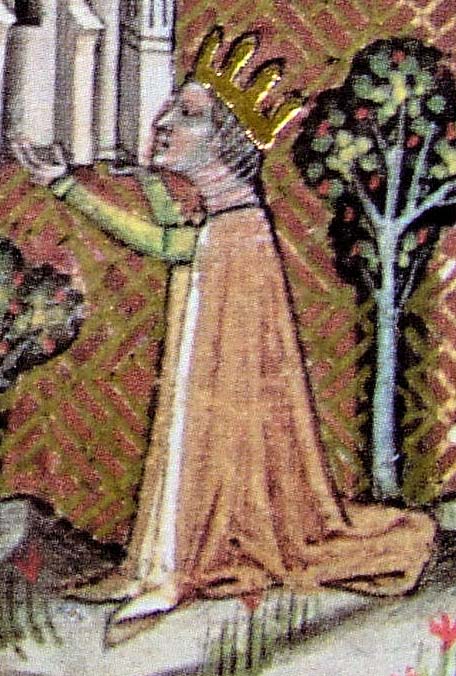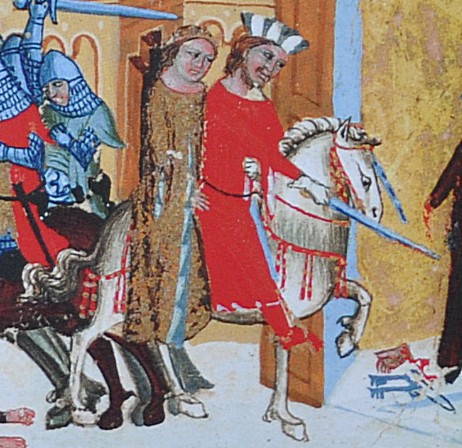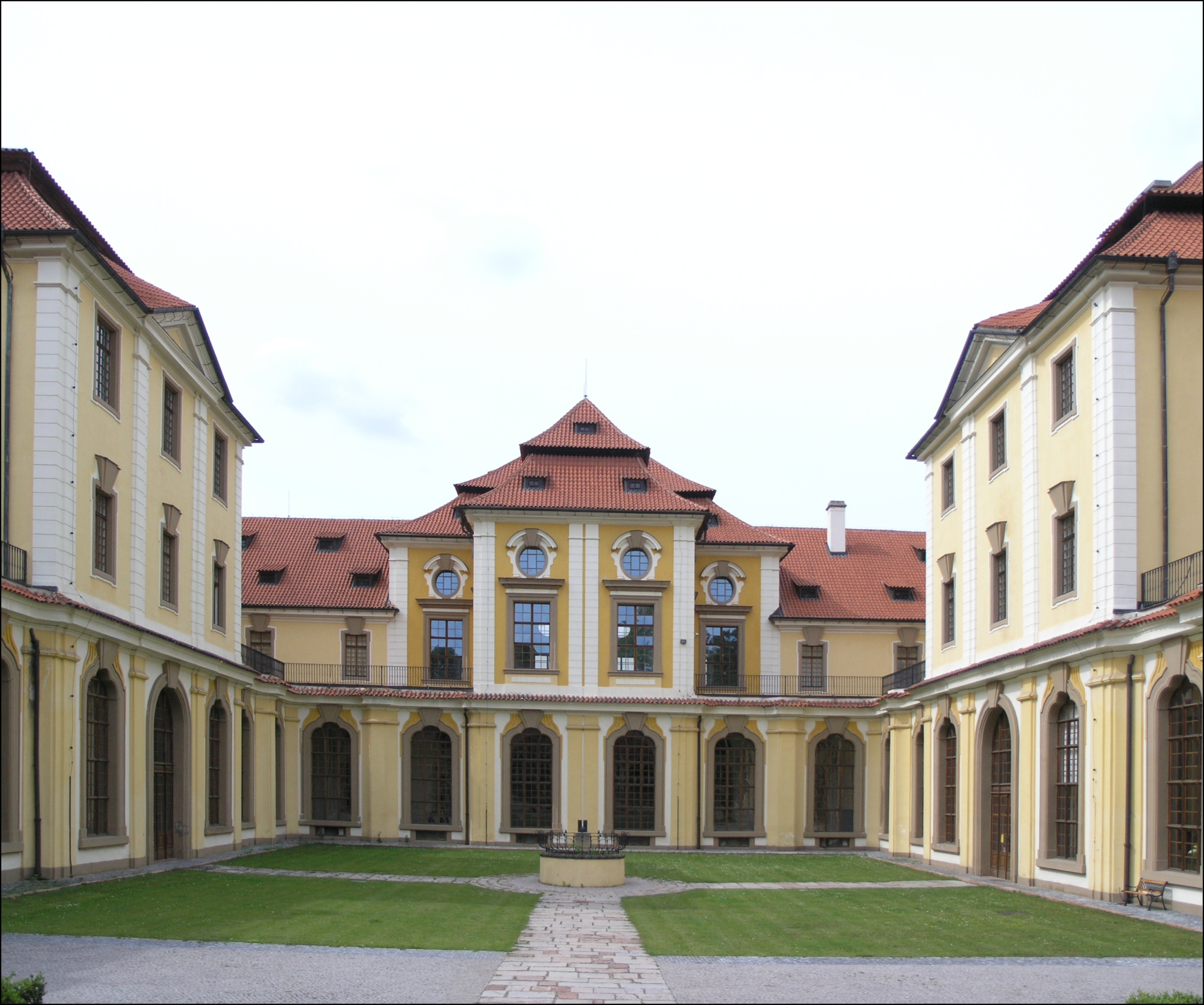|
Beatrix Of Luxembourg
Beatrice of Luxembourg ( hu, Luxemburgi Beatrix; 1305 – 11 November 1319), was by birth member of the House of Luxembourg and by marriage Queen of Hungary. She was the youngest child of Henry VII, Holy Roman Emperor and his wife, Margaret of Brabant. Her two siblings were John of Luxembourg and Marie of Luxembourg, Queen of France. Life At the time of his death (1313), Emperor Henry VII initiated the negotiations for a marriage between Beatrice and Charles, Duke of Calabria, son and heir of King Robert of Naples, and also planned to marry again (his wife was already dead in 1311) with Catherine of Habsburg. Beatrice was called by her father to Italy, where she arrived with her paternal grandmother, Beatrice d'Avesnes. The marriage plans with the Duke of Calabria failed, and the Emperor began negotiations for a marriage with Prince Peter of Sicily, eldest son and heir of King Frederick III; however, the current political conflicts between the Holy Roman Empire and the Kingd ... [...More Info...] [...Related Items...] OR: [Wikipedia] [Google] [Baidu] |
List Of Hungarian Consorts
This is a list of the queens consorts of Hungary ( hu, királyné), the consorts of the kings of Hungary. After the extinction of the Árpád dynasty and later the Angevin dynasty, the title of King of Hungary has been held by a monarch outside of Hungary with a few exceptions. After 1526, the title of Queen of Hungary belonged to the wife of the Habsburg Emperors who were also King of Hungary. Queens of Hungary also held the titles after 1526: Holy Roman Empress (later Empress of Austria) and Queen consort of Bohemia. Since Leopold I, all kings of Hungary used the title of Apostolic King of Hungary the title given to Saint Stephen I by the Pope and their wives were styled as Apostolic Queens of Hungary. The title lasted just a little over nine centuries, from 1000 to 1918. The Kingdom of Hungary also had two queens regnant (''királynő'') who were crowned as kings: Maria I and Maria II Theresa. Grand Princesses of the Hungarians Queens consort of Hungary House ... [...More Info...] [...Related Items...] OR: [Wikipedia] [Google] [Baidu] |
Maria Of Bytom
Maria of Bytom ( pl, Maria bytomska; before 1295 – 15 December 1317) was a Queen of Hungary by marriage to Charles I of Hungary. She was the third child and only daughter of Duke Casimir of Bytom by his wife Helena, whose origins are unknown, although the later historiography tends to recognize her as a daughter of Lev I of Galicia, from the Rurikid dynasty. Maria was the first or second wife of Charles I Robert of Anjou, King of Hungary. This union was childless, but older literature claimed that they had two daughters. Little is known about the activities of Mary as Queen of Hungary. Her marriage to Charles I Robert consolidated the Polish-Hungarian agreement directed against the Kingdom of Bohemia, and also helped to establish a close Polish-Hungarian relations in the 14th century, reflected in the ecclesiastical career in Hungary of Maria's brothers, Bolesław and Mieszko, and the later third marriage of Charles I Robert with Elizabeth of Kujavia. Life Birth The e ... [...More Info...] [...Related Items...] OR: [Wikipedia] [Google] [Baidu] |
14th-century German Women
As a means of recording the passage of time, the 14th century was a century lasting from 1 January 1301 ( MCCCI), to 31 December 1400 ( MCD). It is estimated that the century witnessed the death of more than 45 million lives from political and natural disasters in both Europe and the Mongol Empire. West Africa experienced economic growth and prosperity. In Europe, the Black Death claimed 25 million lives wiping out one third of the European population while the Kingdom of England and the Kingdom of France fought in the protracted Hundred Years' War after the death of Charles IV, King of France led to a claim to the French throne by Edward III, King of England. This period is considered the height of chivalry and marks the beginning of strong separate identities for both England and France as well as the foundation of the Italian Renaissance and Ottoman Empire. In Asia, Tamerlane (Timur), established the Timurid Empire, history's third largest empire to have been ever establish ... [...More Info...] [...Related Items...] OR: [Wikipedia] [Google] [Baidu] |
14th-century Hungarian Women
As a means of recording the passage of time, the 14th century was a century lasting from 1 January 1301 ( MCCCI), to 31 December 1400 ( MCD). It is estimated that the century witnessed the death of more than 45 million lives from political and natural disasters in both Europe and the Mongol Empire. West Africa experienced economic growth and prosperity. In Europe, the Black Death claimed 25 million lives wiping out one third of the European population while the Kingdom of England and the Kingdom of France fought in the protracted Hundred Years' War after the death of Charles IV, King of France led to a claim to the French throne by Edward III, King of England. This period is considered the height of chivalry and marks the beginning of strong separate identities for both England and France as well as the foundation of the Italian Renaissance and Ottoman Empire. In Asia, Tamerlane (Timur), established the Timurid Empire, history's third largest empire to have been ever establish ... [...More Info...] [...Related Items...] OR: [Wikipedia] [Google] [Baidu] |
14th-century Luxembourgian People
As a means of recording the passage of time, the 14th century was a century lasting from 1 January 1301 (Roman numerals, MCCCI), to 31 December 1400 (Roman numerals, MCD). It is estimated that the century witnessed the death of more than 45 million lives from political and natural disasters in both Europe and the Mongol Empire. West Africa experienced economic growth and prosperity. In History of Europe, Europe, the Black Death claimed 25 million lives wiping out one third of the European population while the Kingdom of England and the Kingdom of France fought in the protracted Hundred Years' War after the death of Charles IV of France, Charles IV, King of France led to a claim to the French throne by Edward III of England, Edward III, King of England. This period is considered the height of chivalry and marks the beginning of strong separate identities for both England and France as well as the foundation of the Italian Renaissance and Ottoman Empire. In History of Asia, Asia, ... [...More Info...] [...Related Items...] OR: [Wikipedia] [Google] [Baidu] |
1319 Deaths
Year 1319 ( MCCCXIX) was a common year starting on Monday (link will display the full calendar) of the Julian calendar. Events January–December * May 8 – Upon the death of his maternal grandfather, King Haakon V, three-year-old Magnus Eriksson becomes King of Norway. * July 8 – Three-year-old Magnus Eriksson is elected king of Sweden, thus establishing a union with Norway. His mother Ingeborg of Norway is given a place in the regency, in both Sweden and Norway. * July 23 – A Knights Hospitaller fleet scores a crushing victory over an Aydinid fleet, off Chios. * September 20 – Battle of Myton: The forces of Robert the Bruce defeat an English army. * December 22 – The ''infante'' James of Aragon renounces his right to inherit the Crown of Aragon and his marriage to Eleanor of Castile, in order to become a monk. * Unknown date – a strong earthquake devastates the city of Ani in medieval Armenia, reducing many of its churches to ... [...More Info...] [...Related Items...] OR: [Wikipedia] [Google] [Baidu] |
1305 Births
Thirteen or 13 may refer to: * 13 (number), the natural number following 12 and preceding 14 * One of the years 13 BC, AD 13, 1913, 2013 Music * 13AD (band), an Indian classic and hard rock band Albums * ''13'' (Black Sabbath album), 2013 * ''13'' (Blur album), 1999 * ''13'' (Borgeous album), 2016 * ''13'' (Brian Setzer album), 2006 * ''13'' (Die Ärzte album), 1998 * ''13'' (The Doors album), 1970 * ''13'' (Havoc album), 2013 * ''13'' (HLAH album), 1993 * ''13'' (Indochine album), 2017 * ''13'' (Marta Savić album), 2011 * ''13'' (Norman Westberg album), 2015 * ''13'' (Ozark Mountain Daredevils album), 1997 * ''13'' (Six Feet Under album), 2005 * ''13'' (Suicidal Tendencies album), 2013 * ''13'' (Solace album), 2003 * ''13'' (Second Coming album), 2003 * ''13'' (Ces Cru EP), 2012 * ''13'' (Denzel Curry EP), 2017 * ''Thirteen'' (CJ & The Satellites album), 2007 * ''Thirteen'' (Emmylou Harris album), 1986 * ''Thirteen'' (Harem Scarem album), 2014 * ''Thir ... [...More Info...] [...Related Items...] OR: [Wikipedia] [Google] [Baidu] |
Elisabeth Of Poland
Elizabeth of Poland ( hu, Erzsébet, pl, Elżbieta; 1305 – 29 December 1380) was Queen of Hungary by marriage to Charles I of Hungary, and regent of Poland from 1370 to 1376 during the reign of her son Louis I. Life Early life She was a member of the Polish royal House of Piast, the daughter of Władysław I the Elbow-high, prince of Kujavia, later King of Poland, and Jadwiga of Greater Poland. She was the sister of Casimir III of Poland, who died in 1370. Her older sister was Cunigunde of Poland, who was married to Bernard of Świdnica. Queen consort She was married on 6 July 1320 to Charles I Robert, King of Hungary. Elizabeth was Charles' fourth wife. The marriage brought an alliance between Poland and Hungary. Charles' two previous marriages are believed not to have left surviving issue, at least no surviving sons. Charles' first wife Maria of Bytom was believed to have been barren but it is also believed she bore two daughters: Catherine and Elizabeth. Others howev ... [...More Info...] [...Related Items...] OR: [Wikipedia] [Google] [Baidu] |
Queen Consort Of Hungary
This is a list of the queens consorts of Hungary ( hu, királyné), the consorts of the kings of Hungary. After the extinction of the Árpád dynasty and later the Angevin dynasty, the title of King of Hungary has been held by a monarch outside of Hungary with a few exceptions. After 1526, the title of Queen of Hungary belonged to the wife of the Habsburg Emperors who were also King of Hungary. Queens of Hungary also held the titles after 1526: Holy Roman Empress (later Empress of Austria) and Queen consort of Bohemia. Since Leopold I, all kings of Hungary used the title of Apostolic King of Hungary the title given to Saint Stephen I by the Pope and their wives were styled as Apostolic Queens of Hungary. The title lasted just a little over nine centuries, from 1000 to 1918. The Kingdom of Hungary also had two queens regnant (''királynő'') who were crowned as kings: Maria I and Maria II Theresa. Grand Princesses of the Hungarians Queens consort of Hungary House ... [...More Info...] [...Related Items...] OR: [Wikipedia] [Google] [Baidu] |
Zbraslav
Zbraslav (; german: Königsaal; Latin ''Aula Regia'') is a Prague districts, municipal district and cadastral area of Prague. The southernmost district of Prague, it lies on the Vltava River in the national administrative district of Prague 16. The former independent municipality of Zbraslav is now one of two cadastral areas in the Prague-Zbraslav Municipal District. The other is Lahovice. History Zbraslav was founded in 1118. In the 13th century, the king Wenceslaus II of Bohemia founded here a very influential Cistercians, Cistercian abbey which was called ''Aula regia'' in Latin. The medieval monastery became the burial place of Bohemian kings. The Madonna of Zbraslav (a masterpiece of Bohemian Gothic fine art) was painted for this monastery in the 1340s. In 1935, Valentin Bulgakov, V. Bulgakov founded an important Russian museum here with collections dedicated to Russian emigrants, but the museum was closed and confiscated by the Communists before 1948. In 1924, Žabovřesk ... [...More Info...] [...Related Items...] OR: [Wikipedia] [Google] [Baidu] |
Prague
Prague ( ; cs, Praha ; german: Prag, ; la, Praga) is the capital and largest city in the Czech Republic, and the historical capital of Bohemia. On the Vltava river, Prague is home to about 1.3 million people. The city has a temperate oceanic climate, with relatively warm summers and chilly winters. Prague is a political, cultural, and economic hub of central Europe, with a rich history and Romanesque, Gothic, Renaissance and Baroque architectures. It was the capital of the Kingdom of Bohemia and residence of several Holy Roman Emperors, most notably Charles IV (r. 1346–1378). It was an important city to the Habsburg monarchy and Austro-Hungarian Empire. The city played major roles in the Bohemian and the Protestant Reformations, the Thirty Years' War and in 20th-century history as the capital of Czechoslovakia between the World Wars and the post-war Communist era. Prague is home to a number of well-known cultural attractions, many of which survived the ... [...More Info...] [...Related Items...] OR: [Wikipedia] [Google] [Baidu] |
Stephen Sáfár
Stephen Sáfár de Csév ( hu, csévi Sáfár István; 1280s–1345) was a Hungarian diplomat, soldier and noble in the first half of the 14th century, a loyal supporter of Charles I of Hungary and his consolidation efforts. In this regard, Stephen served as ''ispán'' of Pilis County and castellan of Visegrád Castle, simultaneously from 1318 until his death. Origin His origin and family background remain unknown. According to a royal charter from 1338, his father was a certain Paul.Engel: ''Genealógia'' (Sáfár de Csév family) As a document issued on 30 August 1326 noted, Stephen "arrived to the realm along with the king harles, while another charter (dated 29 January 1327) suggested Stephen served Charles immediately after the king's arrival in late 1300. Thus it is possible that Stephen of foreign origin accompanied the twelve-year-old Charles from Naples to Hungary. This assumption is confirmed by the fact that Stephen served as envoy of Charles to foreign lands at least ni ... [...More Info...] [...Related Items...] OR: [Wikipedia] [Google] [Baidu] |







